Africa on BBC Knowledge is a surprising and awe-inspiring series that brings you face to face with the unknown natural history of Africa and its wildlife. This stunning series took four years to film – to provide you with never seen before footage – a total of five hours of quality video. Each episode takes you on an emotional journey through the Kalahari, the Savannah, Congo, The Great Cape and concludes in an exploration of the Sahara.
Episode 3 – Congo
You may have seen pictures from the Congo before, but this Sunday’s episode of Africa on BBC Knowledge will introduce you to the most intimate images of this region, including scenes of the beautiful Picathartes bird and previously unseen footage of a young female chimp who has learned to ‘pound’ for the honey stored in the nest of stingless bees. Hanging tens of metres in the air, she risks her life for a taste of sweetness.
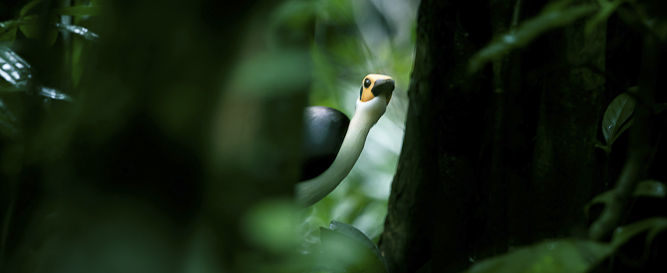
Picathartes – the white necked rockfowl; its head is bald apart from three little feathers and its skin is luminous yellow, making Picathartes one of the most striking birds on the planet. © Felicity Egerton
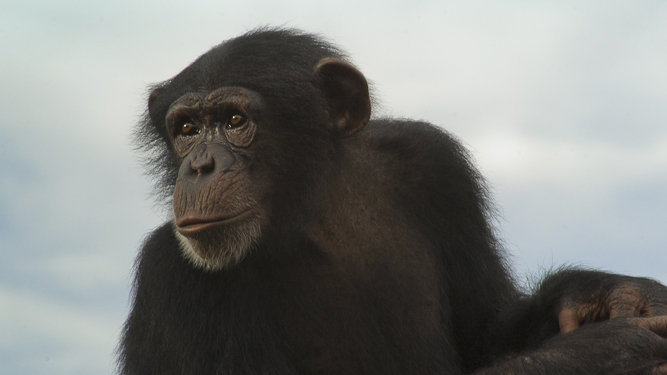
The chimpanzee is our closest relative, and like us they rely on ingenuity and invention to overcome the challenges of life. Filmed for the first time, one very special chimp has found a new source of food, accessible only with the use of a specially made tool and not inconsiderable daring. © Rosie Thomas
Don’t miss out on this incredible account of #AfricaBBC’s episode of the Congo by tuning in to BBC Knowledge this Sunday at 18h00. If you need a little more inspiration, check out this montage of the epicness that went into making the series. It’s incredible, and at times even quite humorous.
Win an East African adventure holiday worth R24 000!
In association with BBC Knowledge and Nomad Africa Adventure Tours we’re offering viewers the chance to win an exclusive Eastern African adventure holiday through Kenya, Malawi, Tanzania, Zambia AND Zanzibar! To enter, post a personal picture of Africa and/or its wildlife via a tweet using #AfricaBBC or on our Facebook page: www.facebook.com/GetawayMagazine.Visit our competitions page to see full details of the competition and be sure to check out the full terms and conditions here or at http://bbcsouthafrica.com.
More images from Africa: Episode 3 – Congo
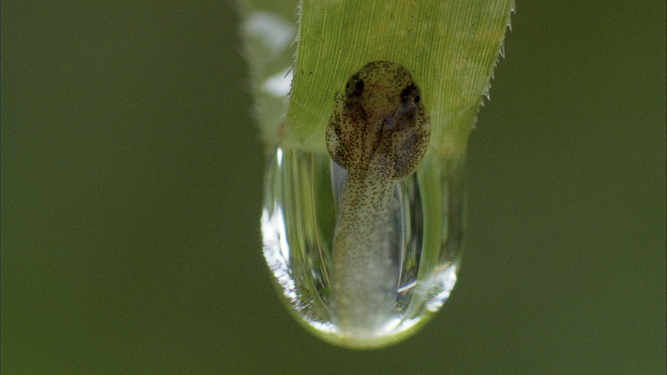
A banana frog tadpole hangs tantalisingly in a drop of water. These frogs time their breeding and development to coincide with the jungle wet season. The eggs are carefully positioned by the parents so that when they hatch, the tadpoles are washed into a pool of water below. © BBC 2012
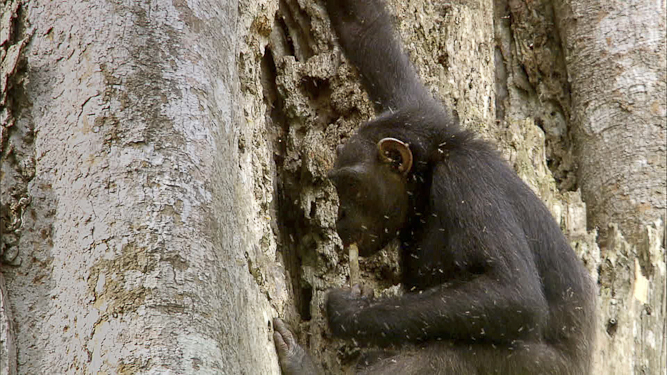
This young female chimp has learned to ‘pound’ for the honey stored in the nest of stingless bees. Hanging tens of metres in the air, she risks her life for a taste of sweetness. This is one of the most complicated forms of tool use yet filmed among Africa’s great apes. © BBC 2012
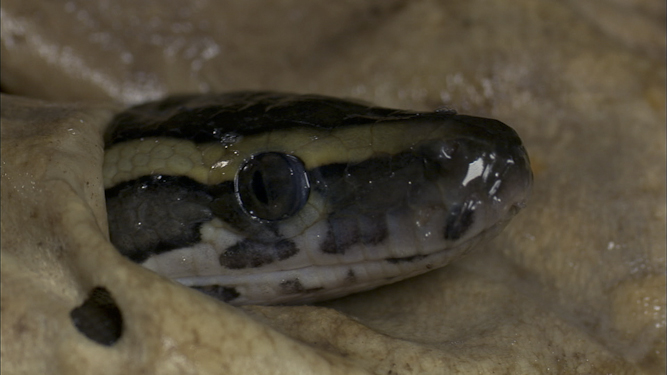
A baby African rock python emerges from its egg, filmed in a special underground filming burrow. Babies like this may grow to become Africa’s largest snake, but the jungles of west Africa will make the journey to adulthood a hard one. © BBC 2012
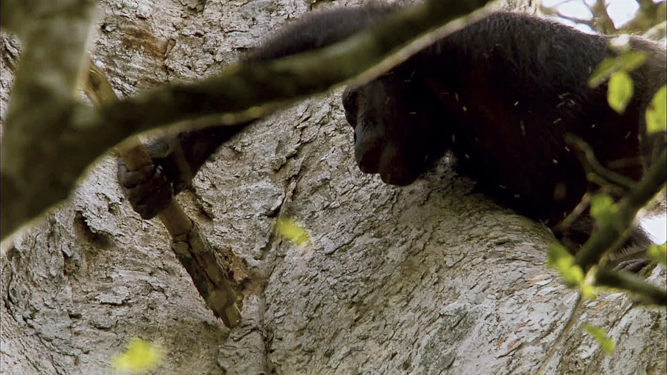
Chimpanzees, our closest relative, are residents of the central rainforests and true icons of wild Africa. One individual has learned how to hammer her way into bees’ nests, high in the trees, to access honey. To capture this extraordinary new example of tool use, the Africa crew spent four gruelling weeks in Sierra Leone, closely following a troop of chimps, rarely seeing more than a glimpse through the dense vegetation. © BBC 2012
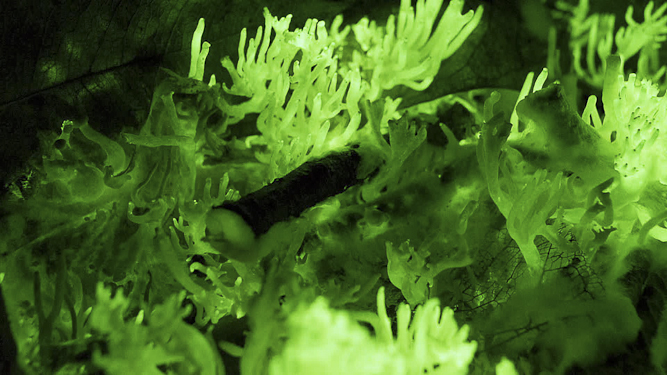
Fluorescing fungi light the dark of the rainforest floor at night. Chimpanzee fire, as its known by locals, may simply be a beautiful side effect of some hidden process. But nobody knows. © BBC 2012

The African rock python is the largest species of snake on the continent, and among the largest in the world. Finding a sunny spot to bask under the dense tree canopy is a challenge, especially when you’re over four meters in length. © Rob Drewett
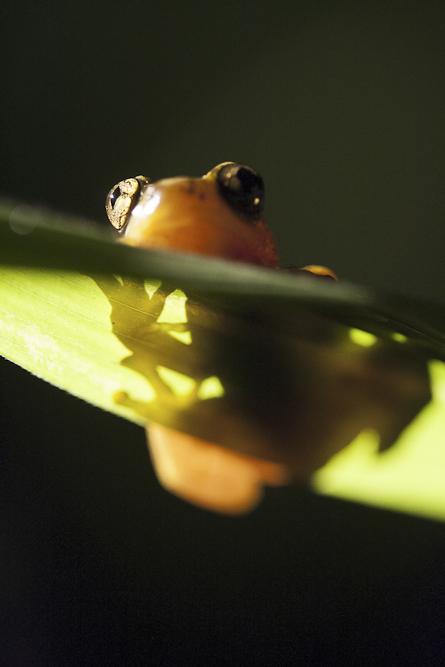
Leaf folding frogs are right at home in the damp shade of the west African jungle. But when it comes to finding a mate their favoured thick forest is a problem. Males sing to impress the females but need a prominent branch to make sure they’re heard. Filmed in the wild for the first time for the Africa series, the frogs fight for the best spots in vigorously contested bouts of ‘kung-fu’ kicking. © Rosie Thomas
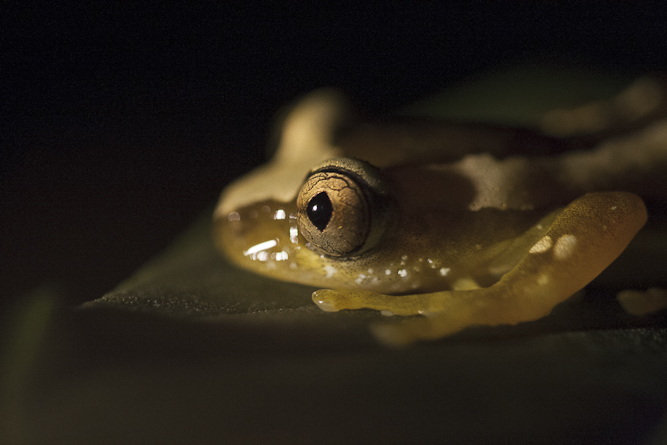
Filmed at night in the wild for the first time, leaf folding frogs do exactly as their name suggests: creasing and gluing leaves to protect their precious eggs. The tadpoles develop in their specially constructed nest awaiting the next rain to dissolve the glue and release them for a life in the forest. © Rosie Thomas

A western lowland gorilla seen through thick vegetation in west Africa. Africa’s jungles are perhaps the most primal habitats on Earth, incredibly rich and diverse but by the same token, stifling. Even the mighty gorilla is both reliant on and trapped by the forest. © Jamie McPherson
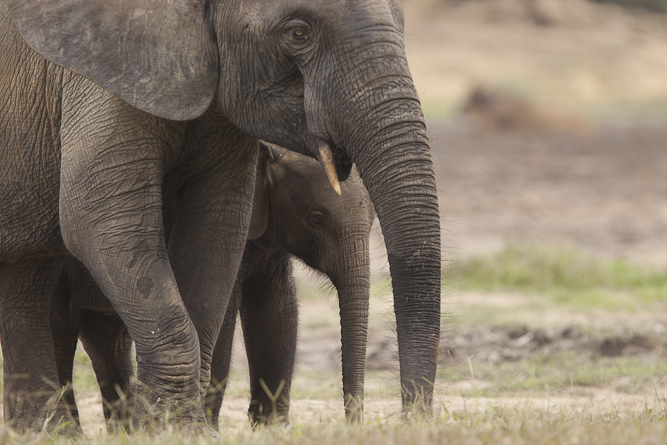
African forest elephants are a different species from their Savannah cousins – they are smaller and specialised for jungle living. They are natural engineers, cutting paths and maintaining clearings for the forest’s other residents. Filming them is dangerous; one elephant spent four hours trying to shake one of the cameramen from his treetop filming platform. © Felicity Egerton

A rare and fleeting glimpse of Picathartes, or the white necked rockfowl, in Sierra Leone. In 1954, David Attenborough went in search of this striking bird for his first natural history documentary from the field: ‘Zoo Quest’. The Africa team spent weeks in the forest filming some of the most intimate images of this vulnerable and declining species rearing chicks in the wild. © Barrie Britton
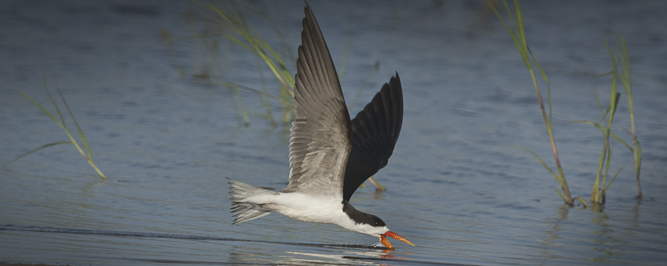
The African skimmers’ long and stable wings allow them to glide just over the water. Dragging their elongated lower beak just under the surface, they ‘skim’ for their prey – snapping their beak shut the moment they touch a fish. Adult skimmers make it look easy but catching prey this way needs to be learned. The Africa crew captured a skimmer chick’s first few weeks of life, as it struggled to cope with its unusual bill and master the skills needed to fish. © Barrie Britton
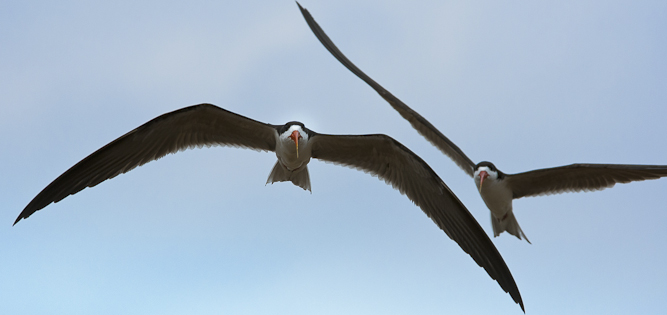
Two African skimmers return to a sand bank and their young. The crew filmed the largest breeding colony in the world at a remote location in west Africa. But time was not on the side of the crew or the birds; the sand bank where the skimmers nest is only temporarily exposed before floods wash the opportunity away. © Barrie Britton



















